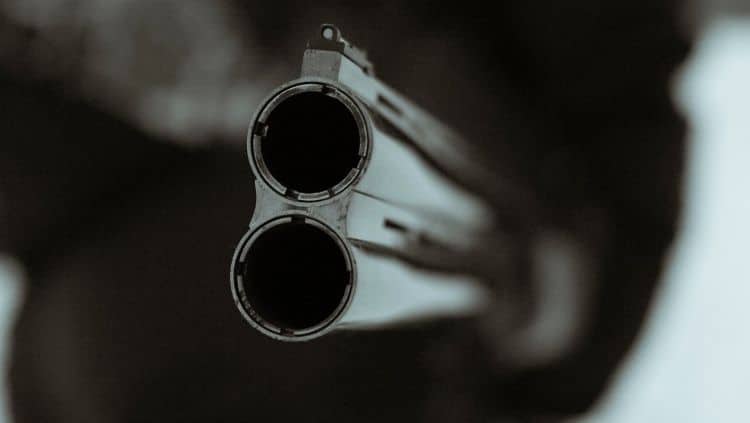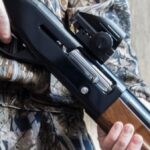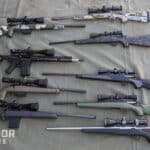Regardless of its type, the inside of a firearm barrel is known as the bore. These sizes can range from very small to impressively large.
Depending on the type of firearm and the internal structure of the barrel, its bore may be expressed as either gauge or caliber.
Gauge, typically used for shotguns, represents how many balls of the same diameter as the gun barrel can be made from a pound of lead. Whereas caliber, generally used for rifles and handguns, refers to the precise diameter of the internal gun barrel expressed in inches or millimeters.
While some shooters use the terms interchangeably, shotgun gauge vs. caliber differs. Let’s explore some of the differences between the two forms of measurement and how they came to be.
What Is the Difference Between Gauge and Caliber?
Getting a precise measurement is critical for firearms and their ammunition. Two common terms you will see used to denote the ammunition capacity of a firearm are gauge and caliber. These numbers are not interchangeable since they denote very different things.
So, what exactly is the difference between gauge and caliber? To understand that fully, it is best to get an idea of what each one represents.
What Is Gauge?
The terms gauge and bore are often used interchangeably, but they are not the same. Gauge is a measurement commonly used to describe the barrel diameter of a shotgun. Ammunition for shotguns is also listed using a gauge, such as 12-gauge, 20-gauge.
Related: What’s the Cheapest Shotgun Gauge to Shoot?
The exception is the .410 bore, which is actually a caliber measurement. That often leads to confusion among new shotgun shooters. However, when you get a bit deeper into the concept of shotgun gauge vs. caliber, the reasons become more clear.
How Is Gauge Measured?
A shotgun’s gauge is directly related to the inside diameter of its barrel. The gauge number represents the number of lead balls with a diameter equal to the barrel’s inside diameter that can be made from one pound of lead.
Let’s break that down a bit more. Traditionally, to get a shotgun’s gauge, you would:
- Measure the inside diameter of its barrel
- Make a lead ball with the same diameter
- Determine the weight (in ounces) of the lead ball
- Divide that number by 16 (ounces in a pound) to get an approximate gauge
For example, you could make about 12 lead balls that fit perfectly inside a 12-gauge shotgun barrel from one pound of lead.
This system dates back to the times when most shooters made their own ammunition in the form of solid lead balls. Since that is no longer the case, especially among recreational shooters, caliber equivalents can also be used.
Because of the measurement system used to determine gauges, larger numbers represent smaller shotguns. After all, it takes fewer 12-gauge size balls to make a pound than it does lead balls with the diameter of a 28-gauge barrel.
Smaller gauge shotguns tend to have less recoil since they carry a smaller load in each shell.
What Is Caliber?
Caliber is the standard unit of measurement for rifles and many handguns. It is a direct measurement expressed in hundredths or thousands of an inch or millimeters.
For example, that .410 bore shotgun barrel actually has an inside diameter of 0.410 inches, or roughly equivalent to 67.5 gauge.
How Is It Measured?
Since this is a direct measurement, it is taken using a special ruler known as calipers. These can take precise measurements of small openings. Newer digital models are easy to operate, so virtually anyone can get an accurate reading.
There is some debate over how caliber is measured in a rifled barrel. In many places, this is done between the ridges of the barrel’s rifling, known as the land. However, other places use a measurement based on the size of the groove. This is especially true for ammunition.
What Uses Gauge and What Uses Caliber?
The basic rule is that shotguns use the gauge measurement to denote size, and rifles and handguns use caliber. However, like with most rules, there are a few exceptions. In fact, it would be a grave error in judgment to say this is a hard and fast rule.
It is standard practice for firearms to be stamped with their size. This will usually be on both the barrel and chamber. It’s a good idea to check your firearm to confirm its shotgun gauge vs. caliber size before using it.
Although there is not a uniform standard for writing the measurement, shooters should be able to determine the correct size from the information provided. If you cannot read the numbers on your firearm, which is common on older firearms showing signs of wear, you should consult a gunsmith to have the gun measured.
Why Is It Different?
Now that you know the difference between gauge and caliber, you may be wondering why the system works that way. Honestly, there is quite a debate over why some firearms use gauge and some caliber.
While we don’t have a definitive answer as to why they are different, we can tell you this: gauge is a historical measurement unit of thickness that originated in the English iron industry. Caliber, on the other hand, is a distinctly firearm-related term.
Does the Difference Between Shotgun Gauge vs. Caliber Matter?
The short answer here is absolutely! While there may not be consensus on exactly why these firearms use different units of measurement, there is little room to argue about the importance of the two.
Every firearm is manufactured to take a specific size and type of ammunition. Without knowing the barrel measurement, whether that is shotgun gauge vs. rifle caliber, you can not match ammunition to the gun.
Putting the wrong size ammunition into a firearm can lead to disaster. A too small cartridge can get lodged in the barrel and cause an obstruction. If it isn’t cleared, the next cartridge may impact it, leading to excess pressure and gun malfunction. Expect a busted barrel and damage to the chamber at best, serious personal injury, or death at worst.
It is highly unlikely you will put a too-large cartridge into your firearm. However, you don’t want to show up at the range, a competition, or your hunting stand and not be able to shoot, either.
If you are reloading your own ammunition, you definitely need an accurate measurement for your firearm. A slight miscalculation can lead to jamming or barrel damage. It’s a good idea to invest in quality measuring tools to ensure safe, accurate loads every time.
Conclusion
The difference between shotgun gauge vs. caliber of a rifled barrel comes down to how its size is expressed. The number provided directly represents the barrel’s internal diameter or bore. Bore size is vital to know since it determines what size ammunition you need to use.
Related:





